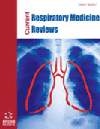
Full text loading...
We use cookies to track usage and preferences.I Understand

Pneumonia, a widespread respiratory infection affecting the alveoli and lung parenchyma, continues to be a major global health concern, particularly in children. Despite advancements in vaccine development and anti-infective therapies, pneumonia is a leading cause of death, particularly among children and the elderly. It accounts for approximately 14% of all deaths in children under five years of age globally, with over 700,000 deaths occurring annually. In adults, especially those over 65 years of age, pneumonia significantly increases mortality, contributing to over 1 million deaths yearly worldwide. Community-acquired Pneumonia (CAP) is predominantly caused by Streptococcus pneumoniae, Mycoplasma pneumoniae, and Chlamydia pneumoniae. Streptococcus pneumoniae is the leading pathogen, particularly in infants, the elderly, and immunocompromised individuals, often resulting in severe clinical presentations. Mycoplasma pneumoniae causes milder, atypical pneumonia, commonly referred to as “walking pneumonia”, affecting young adults and adolescents. Chlamydia pneumoniae is also a significant cause of mild to moderate respiratory infections, particularly in school-aged children. The identification of these pathogens is critical for guiding empirical antimicrobial therapy, as the clinical severity and response to treatment vary with each microorganism. This review aimed to explore the intricacies of pneumonia pathogenesis and provide insights into the role of various microorganisms in its development. By emphasizing the importance of timely and appropriate antimicrobial therapy, the review further aims to underscore the need for rapid, accurate diagnostic tests capable of detecting pathogens and antibiotic resistance. Therefore, improving diagnostic capabilities and targeted treatments is essential for effective pneumonia management. The complexity of pneumonia pathogenesis and the variety of causative microorganisms require rapid, accurate diagnostic tests to guide appropriate therapy.

Article metrics loading...

Full text loading...
References


Data & Media loading...